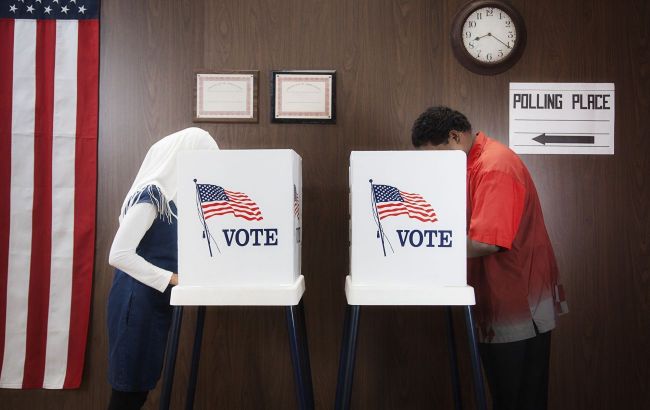Features of electing president in US
 Voting in the US election (photo: Getty Images)
Voting in the US election (photo: Getty Images)
The electoral system in the United States differs from that of most other countries. The president is elected in two stages.
RBC-Ukraine explains the specifics of US elections and what to pay attention to.
The rules by which Americans elect their head of state are quite unique. Unlike most other countries, elections occur in two stages.
First, voting takes place in each individual state. However, Americans will not formally vote directly for Kamala Harris or Donald Trump; they will vote for so-called "electors" — special party delegates. These electors will then cast their votes for the respective candidate.
In modern-day America, the role of electors has become formalized. However, this system effectively means that separate elections occur in each state.
How many electors are needed for victory
A candidate must secure 270 of the 538 electors to win the presidential election. The number of electors in each state varies based on population. California has the most electors, at 54, while smaller states like Vermont, Wyoming, North Dakota, and South Dakota each have a minimum of three electors.
Most states operate under a "winner-takes-all" principle, with exceptions for Nebraska and Maine. Thus, to receive all of a state's electors, a candidate simply needs to obtain more votes than their opponent.
In practice, this means that a person can become president of the United States despite receiving fewer votes from the national electorate. Such instances have occurred twice in modern US history — during the elections of 2000 and 2016, when Trump won this way.
What are swing states
Most states consistently support either the Republicans or Democrats for many years or even decades. For example, California has been considered a Democratic stronghold since the 1990s, although it previously voted for Republicans. Conversely, Texas used to support Democrats but now predominantly votes for Republicans. In these states, there is little incentive for campaigning, as it is challenging to persuade a large number of voters to change their preferences.
However, several states have roughly equal support for Democrats and Republicans, increasing the chances of swaying voters one way or the other. These states are referred to as swing states. Each election cycle, they may change, as voters can alter their positions due to various factors, such as demographic shifts from migration or the rise and fall of certain economic sectors.
In the 2024 election, there are seven swing states: Wisconsin, Pennsylvania, Michigan, Georgia, Nevada, North Carolina, and Arizona. In each of these states, the ratings for the two main candidates are close, with the margin well within the statistical error. This means that both Kamala Harris and Donald Trump will devote a significant portion of their campaign attention and advertising budgets to these states, often neglecting others.
Pennsylvania holds the most weight for candidates, with 19 electoral votes. Next are Michigan and Georgia with 16 each, North Carolina with 15, Arizona with 11, Wisconsin with 10, and Nevada with 6.
Previously, RBC-Ukraine reported on how bookmakers place bets during the US election.
For more news on the presidential campaign, candidate ratings, and the intricacies of the electoral system, check out the US Elections section on RBC-Ukraine.
Sources: us.gov, Voice of America, NPR, USA Today.

